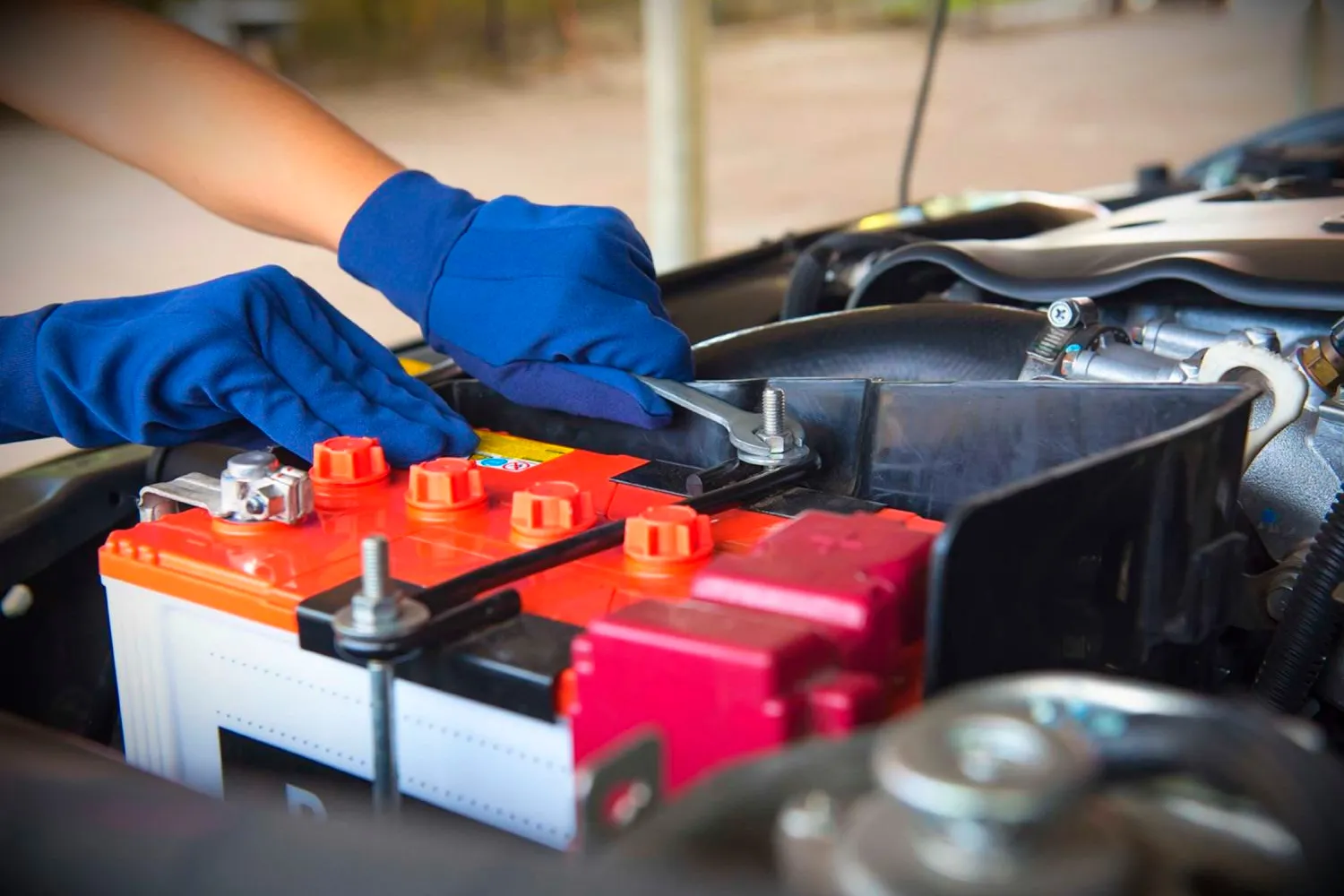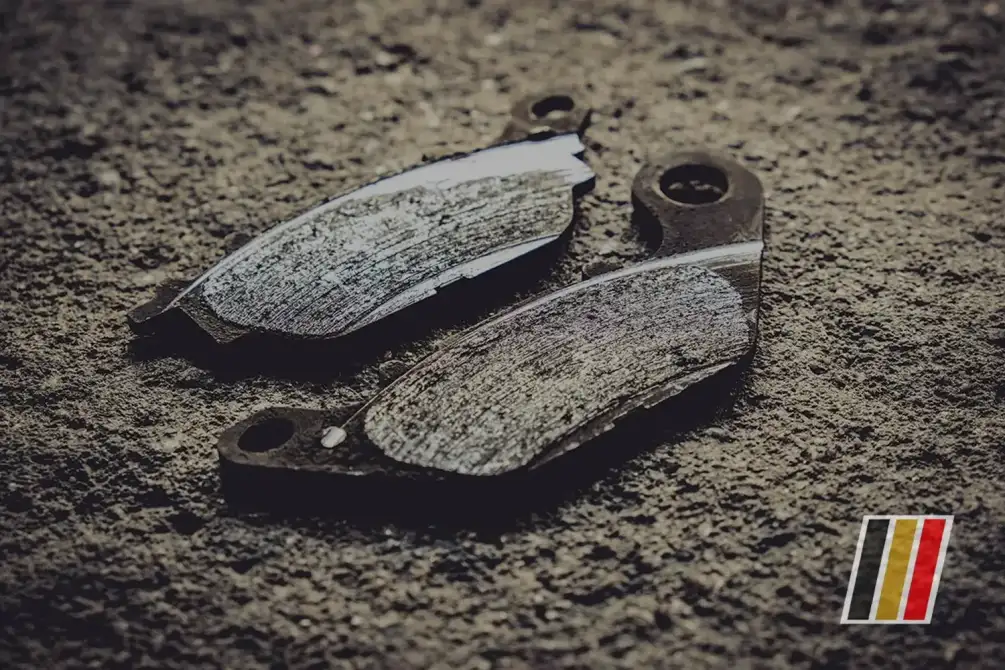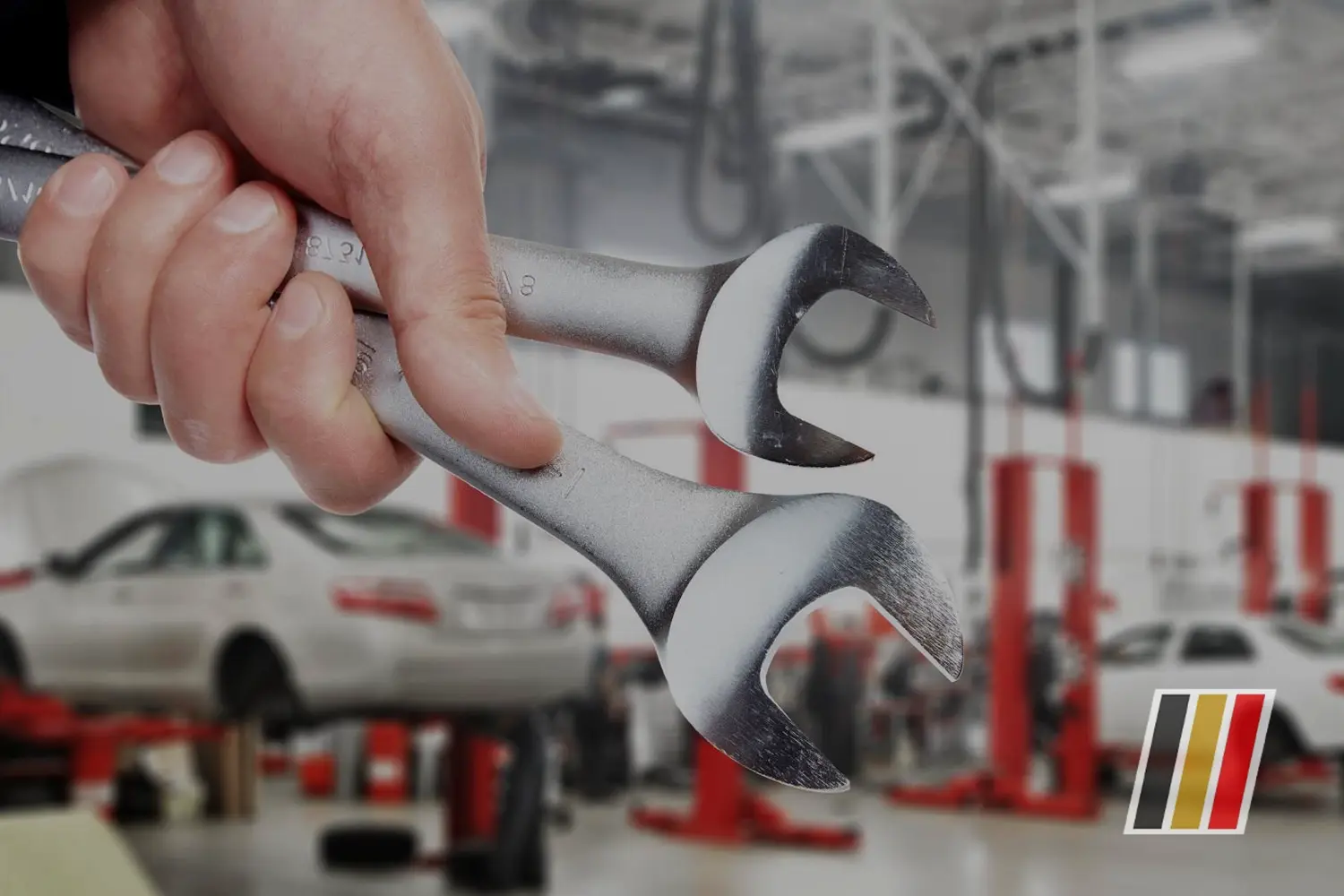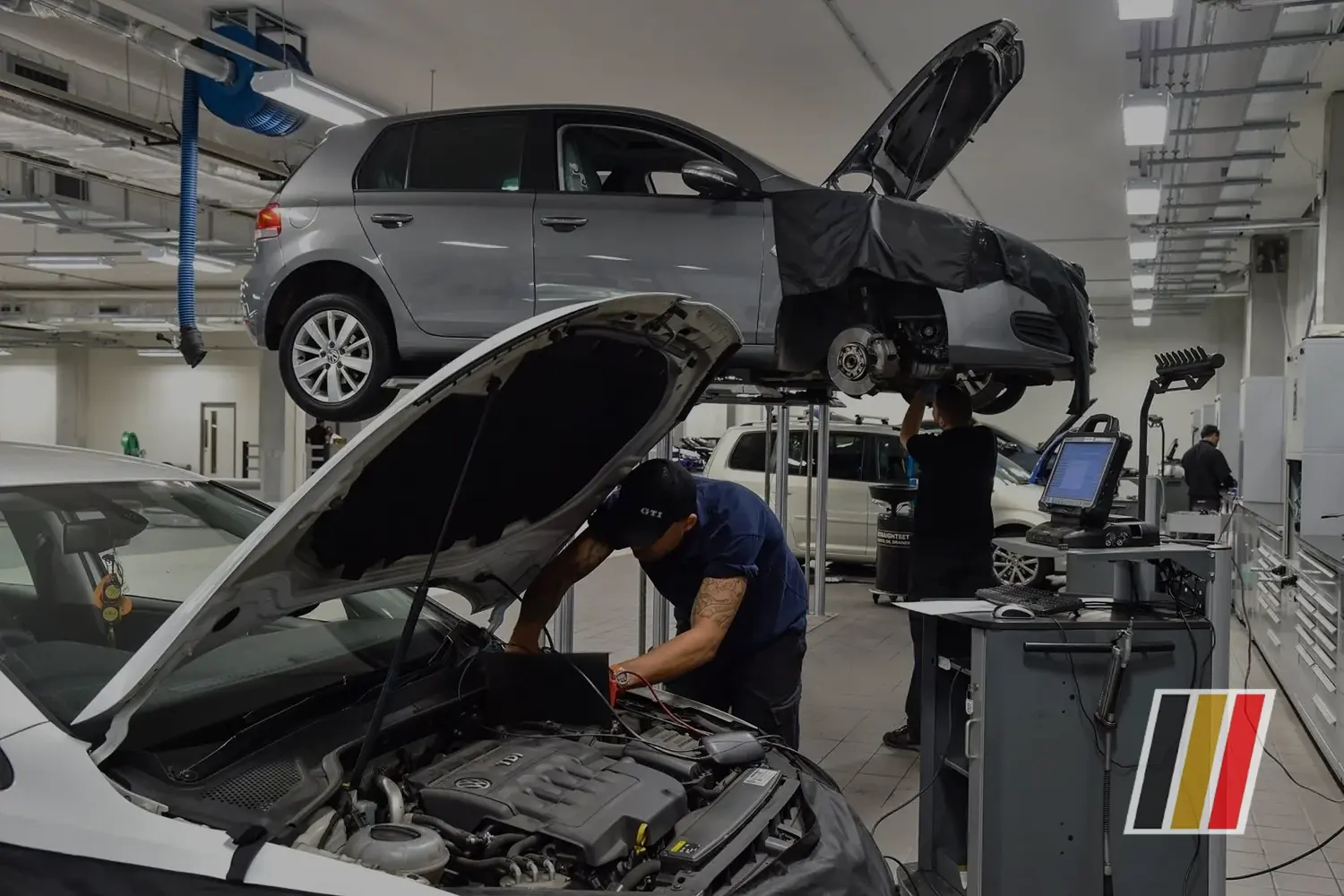A brake pad costs around £250-£500 for replacement in the UK. Read this guide to
Read MoreHow to Change a Car Battery – A Step-by-Step Guide for Beginners
- 5 min read

Have you ever turned the key in your car’s ignition and… nothing? It’s one of those moments that can send a wave of frustration through anyone. But don’t worry—you might just need a simple fix: a battery change. If you’ve never done it before, the idea of replacing a car battery may seem daunting, but it’s actually a straightforward task that you can handle yourself in under 30 minutes!
In this guide, we’ll walk you through how to change change a car battery from start to finish. You’ll also learn how to extend your battery’s life and understand when it’s time for a replacement. Let’s dive in!
In this guide, we’ll walk you through how to change change a car battery from start to finish. You’ll also learn how to extend your battery’s life and understand when it’s time for a replacement. Let’s dive in!
What is a Car Battery and Why Does it Matter?
Your car’s battery is the heart of your vehicle’s electrical system. It provides the necessary power to start the engine and keeps all your car’s electronics running—lights, radio, air conditioning, and more. Without a functioning battery, your car simply won’t start, no matter how much gas you’ve got in the tank.
How Long Does a Car Battery Last?
A typical car battery lasts about 3 to 5 years, but factors like weather conditions, driving habits, and the quality of the battery itself can affect its lifespan. If you live in a particularly hot or cold climate, you might find yourself replacing it more often. Checking your battery’s health periodically can save you from being stranded.
What is a Car Battery and Its Function?
Understanding what a car battery does can help you appreciate the importance of maintaining it.
- Role of a Car Battery in Vehicle Operation: The battery provides the electrical power needed to start the engine and powers the car’s electrical components.
- Different Types of Car Batteries:
- Lead-acid Batteries: The most common type, affordable and reliable.
- AGM (Absorbent Glass Mat) Batteries: More durable and resistant to vibration.
- Lithium-ion Batteries: Lightweight and longer-lasting but more expensive.
Signs Your Car Battery Might Be Dying
Imagine being late for work, hopping into your car, and it just doesn’t start. Knowing the signs of a dying battery can help you avoid this kind of nightmare. Look for:
- Slow engine crank If your car struggles to start, it could be the battery.
- Dimming headlights: If your lights seem dimmer than usual, your battery might be struggling.
- Electrical issues: Malfunctioning radio, windows, or dashboard lights could signal battery trouble.
- Battery Warning Light: Illuminates on your dashboard.
Diagnosing Car Battery Problems: Do You Really Need a Replacement?
Before you head out to buy a new battery, it’s a good idea to make sure the problem isn’t something else. Check for these common issues:
- Loose cables: Sometimes, a loose connection is the real culprit.
- Corrosion: A build-up of corrosion around the battery terminals can block the connection.
- Alternator problems: The alternator charges your battery while you drive, so a bad alternator can make it seem like the battery is the problem.
Is it Safe to Change a Car Battery by Myself?
Yes, changing a car battery is generally safe to do yourself as long as you follow some basic precautions. The process involves working with electrical components and potentially hazardous materials, but with the right approach, you can avoid common risks.
What Precautions Should I Take When Changing a Car Battery?
- Wear Safety Gear: Use safety glasses and gloves to protect yourself from battery acid and potential sparks.
- Work in a Well-Ventilated Area: Ensure you’re in a space with good airflow to avoid inhaling any fumes.
- Keep Flammable Materials Away: Battery acid and fumes can be hazardous, so keep any flammable materials away from your work area.
Can I Get Shocked While Changing the Battery?
While it’s unlikely you’ll get a severe shock if you follow proper procedures, it’s possible to receive a mild shock if you accidentally short-circuit the battery. To minimize risk, always disconnect the negative terminal first and handle connections carefully.
Do I Need Any Special Equipment to Replace My Car Battery?
Generally, you don’t need special equipment beyond the basic tools mentioned above. However, if your vehicle has a complex battery setup or is equipped with advanced electronics, you might need additional tools or guidance. Check your car’s manual for specific requirements.
Should I Replace the Car Battery Myself or Get a Professional?
If you’re comfortable following the steps and taking the necessary precautions, doing it yourself can save money. Otherwise, a professional can ensure it’s done correctly and safely.
How Much Would It Cost to Have a Mechanic Replace It?
Mechanic fees for battery replacement typically range from $50 to $100, plus the cost of the battery.
How to Change Your Car Battery Step-by-Step Guide:
Changing a car battery doesn’t require you to be a mechanic. Here’s how to do it safely and efficiently.
- Park Your Car Safely
- Locate the Battery
- Disconnect the Negative Cable First
- Disconnect the Positive Cable
- Remove the Battery
- Clean the Terminals
- Install the New Battery
- Test the New Battery
Tools You’ll Need to change the car Battery
- Safety gloves and glasses
- Wrench set
- Wire brush (for cleaning corrosion)
- A new battery (make sure it’s the right one for your vehicle)
Step 1: Park Your Car Safely
Turn off your car and remove the key from the ignition. Make sure you’re parked on a flat surface and engage the parking brake. This ensures that your car won’t roll while you’re working on it.
Step 2: Locate the Battery
Pop the hood and locate the battery. In most cars, it’s near the front of the engine compartment, but some models have it in the trunk or under the back seat.
Step 3: Disconnect the Negative Cable First
Using a wrench, loosen the nut on the negative terminal (marked with a minus sign “-“). Always disconnect the negative terminal first to avoid short circuits. Pull the cable away from the battery.
Step 4: Disconnect the Positive Cable
Next, loosen the nut on the positive terminal (marked with a plus sign “+”). Carefully remove the cable.
Step 5: Remove the Battery
Now that the cables are disconnected, remove any clamps or brackets holding the battery in place. Carefully lift the old battery out of the compartment (it may be heavier than you expect).
Step 6: Clean the Terminals
Use a wire brush to clean any corrosion or residue from the battery terminals. This helps ensure a good connection with the new battery.
Step 7: Install the New Battery
Place the new battery into the compartment. Attach the positive cable first, then the negative cable. Make sure both cables are secure and the terminals are clean.
Step 8: Test the New Battery
Once everything is reconnected, start your car to make sure the new battery is working. If it starts smoothly, congratulations—you’ve just changed your car battery!
What Can Go Wrong If I Replace the Car Battery Incorrectly?
Incorrect installation can lead to poor performance, damage to your vehicle’s electrical system, or even cause a fire hazard. Always follow proper procedures or consult a professional if unsure.
Will Changing the Battery Affect My Car’s Electronics?
In most cases, changing the battery should not affect your car’s electronics. However, if not done properly, it could cause issues. Ensure all connections are secure and double-check any electronic systems.
Which Terminal Do I Disconnect First?
Always disconnect the negative terminal first. This minimizes the risk of short-circuiting the battery.
How Do I Properly Connect the New Battery?
When installing the new battery:
- Connect the Positive Terminal: Attach and tighten the positive cable first.
- Connect the Negative Terminal: Attach and tighten the negative cable.
How Do I Know Which Battery Fits My Car?
Check your vehicle’s owner’s manual or consult with an auto parts store to ensure you get the correct battery size and type for your car.
Can I Use Any Type of Battery for My Car?
No, you should use the type recommended by your vehicle manufacturer. Using the wrong type can affect performance and safety.
How to Dispose of an Old Car Battery Safely
Now that you’ve got a new battery in place, don’t just toss the old one in the trash! Car batteries contain hazardous materials like lead and acid that are harmful to the environment. Most auto parts stores will accept your old battery for recycling, often giving you a small credit in return.
Is There Any Environmental Concern with Disposing of a Car Battery?
Yes, car batteries contain hazardous materials like lead and acid. Proper disposal is crucial to prevent environmental contamination.
How to Charge a Car Battery
Sometimes, a battery just needs a boost. Here’s how to charge your car battery:
- Choose the right charger: Trickle chargers are safer for long-term charging, while fast chargers can give you a quick boost in an emergency.
- Safety first: Always wear gloves and glasses when handling car batteries, and ensure the charger is compatible with your battery type.
- Charging time: It usually takes anywhere from 2 to 24 hours to charge a battery, depending on its condition and the charger you’re using.
How Much Does a New Car Battery Cost?
The cost of a new battery varies depending on the type and brand. On average, a standard car battery costs between £50 and £150, while high-performance or electric vehicle batteries can cost significantly more. You can save on labor costs by doing the replacement yourself.
How Much Does a New Car Battery Cost?
No one wants to change their battery too often, so here are some tips to extend its life:
- Regularly clean the terminals: Keep the battery connections free from corrosion.
- Avoid short trips: Frequent short drives don’t give the alternator enough time to recharge the battery.
- Turn off electronics: Make sure lights, radio, and air conditioning are off when you turn off the engine.
How Often Should I Check My Car Battery?
It’s a good idea to check your battery every few months or before long trips. Regular checks help identify issues before they become major problems.
Conclusion: Take Charge of Your Car Battery Maintenance
Changing a car battery might sound intimidating, but with a little know-how and the right tools, you can save yourself both time and money. Plus, it’s one of those skills that come in handy when you least expect it! Just remember, if you ever feel unsure, don’t hesitate to consult a professional.
Related articles & guides 👇
Learn how to change a car battery step-by-step with our easy-to-follow guide. Avoid getting stranded
Read MoreWhat is a Car Battery and Why Does it Matter?
Step 1: Park Your Car Safely
Turn off your car and remove the key from the ignition. Make sure you’re parked on a flat surface and engage the parking brake. This ensures that your car won’t roll while you’re working on it.








